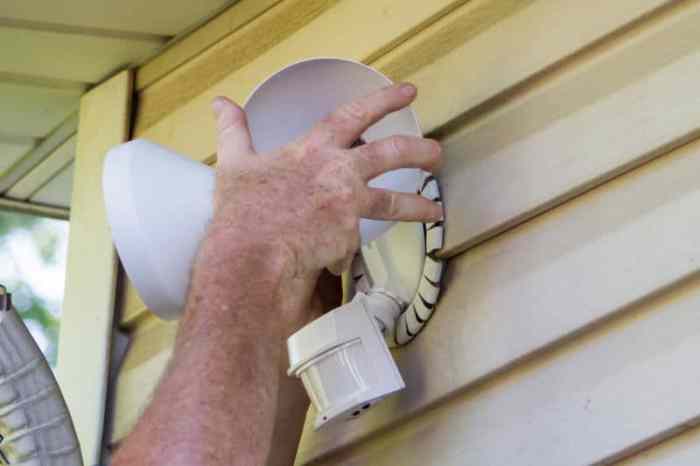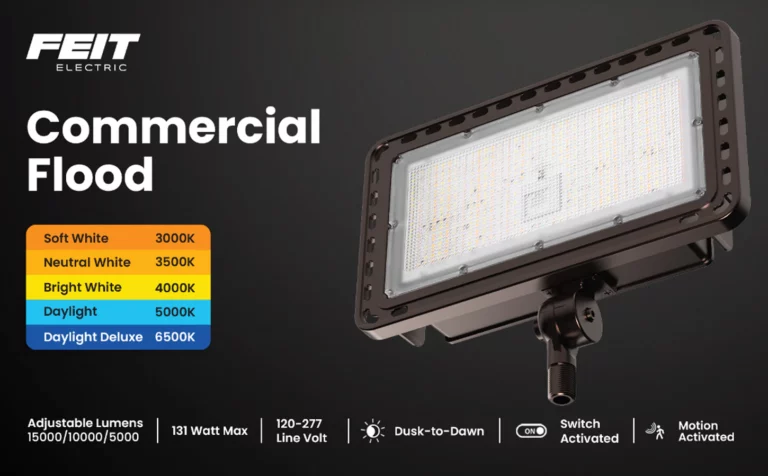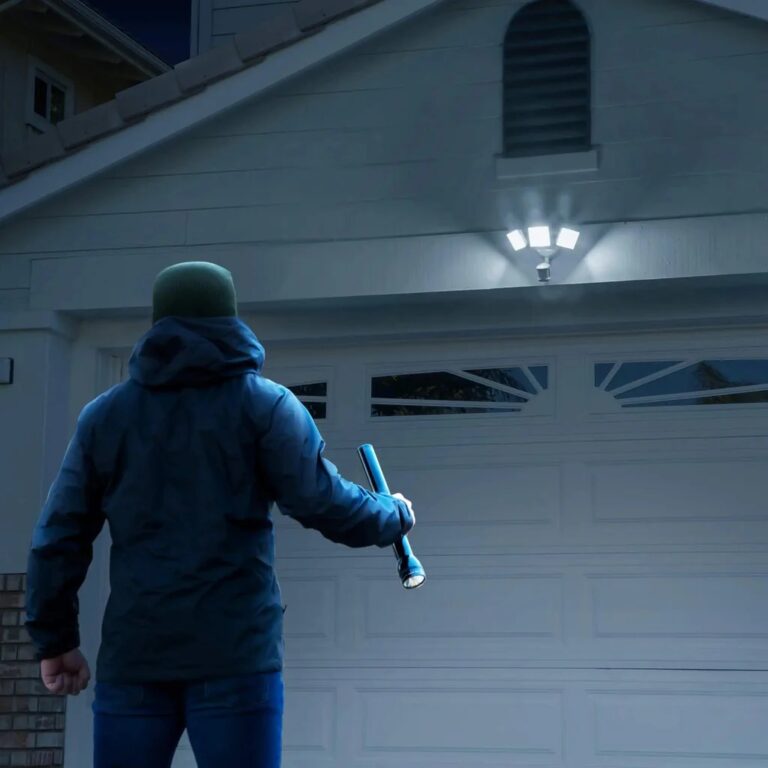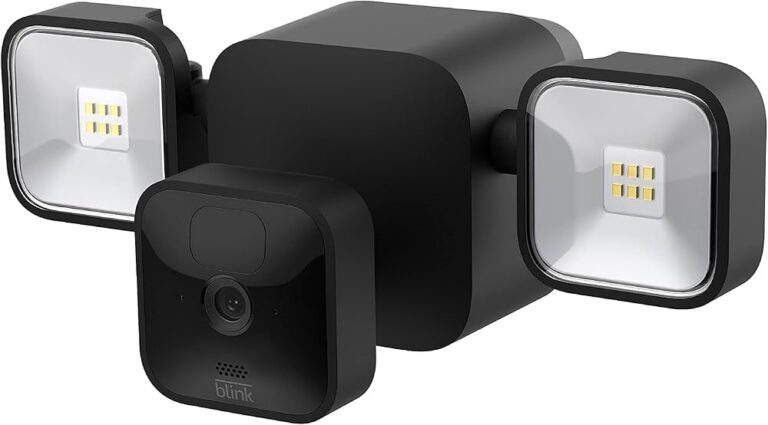Envision Security Solar Pest A Sustainable Solution
Envision Security Solar Pest Solutions offers a novel approach to pest control, leveraging the power of the sun to create sustainable and effective systems. These innovative solar-powered devices represent a significant advancement in environmentally conscious pest management. They combine cutting-edge technology with renewable energy sources, promising a future where pest control is both efficient and eco-friendly.
This exploration delves into the specifics of envision security solar pest, examining their design, operation, and performance. We’ll analyze different types of solar-powered pest control systems, considering factors like energy efficiency, coverage area, and cost. Furthermore, we’ll scrutinize the operational procedures, maintenance schedules, and troubleshooting steps, offering a comprehensive guide to setting up and maintaining these systems.
Defining Envision Security Solar Pest Solutions
Envision Security Solar Pest Solutions represents a cutting-edge approach to pest control, leveraging the power of the sun for sustainable and effective solutions. These systems are designed to minimize environmental impact while maintaining high levels of pest deterrence. This innovative approach distinguishes them from traditional pest control methods.
These systems integrate solar energy to power pest control devices, eliminating the need for extensive wiring and reducing reliance on conventional power grids. This sustainable approach aligns with growing environmental consciousness and offers a more responsible pest management strategy.
Types of Solar-Powered Pest Control Systems

Envision Security Solar Pest Solution encompasses a variety of solar-powered pest control systems, each tailored for specific needs and applications. These include ultrasonic repellents, motion-activated sprinklers, and targeted light traps, all powered by solar panels. These systems offer a range of functionalities, catering to different pest types and environments.
- Ultrasonic Repellents: These systems emit high-frequency sound waves that are unpleasant to certain insects and rodents but inaudible to humans. This method leverages the principle of sound aversion to deter pests, providing a non-toxic alternative to chemical solutions.
- Motion-Activated Sprinklers: These systems automatically activate a targeted spray of water upon detecting movement. This method is effective against a wide range of pests and can be integrated with sensors for enhanced accuracy.
- Targeted Light Traps: These systems use specific wavelengths of light to attract and trap certain insects. They often utilize UV or other targeted light frequencies, effectively capturing pests without harming beneficial insects.
Key Components and Technologies, Envision Security Solar Pest
Solar-powered pest control systems rely on a combination of key components and technologies for optimal performance. These systems typically include solar panels, energy storage batteries, and pest control devices. Sophisticated sensors and control systems regulate the operation of the pest control devices based on environmental conditions and detected pest activity.
- Solar Panels: High-efficiency solar panels convert sunlight into electricity to power the system.
- Energy Storage Batteries: These batteries store the collected solar energy for use during periods of low sunlight, ensuring continuous operation of the system.
- Pest Control Devices: These devices can range from ultrasonic emitters to motion-activated sprinklers, tailored to address specific pest types and environmental factors.
- Sensors and Control Systems: Sophisticated sensors monitor environmental conditions and pest activity, adjusting the operation of the pest control devices accordingly. This ensures optimal performance and targeted responses.
Comparison of Envision Security Solar Pest Control Options
The following table compares different solar-powered pest control options based on key factors, including energy efficiency, coverage area, and cost. This comparative analysis provides insights into the optimal solution for various applications.
| Pest Control Option | Energy Efficiency | Coverage Area | Estimated Cost |
|---|---|---|---|
| Ultrasonic Repellent | High, minimal energy consumption | Moderate; effective within a defined radius | Moderate |
| Motion-Activated Sprinkler | Moderate; depends on sprinkler intensity and sensor usage | High; covers a wider area with proper placement | High |
| Targeted Light Trap | Moderate; energy consumption depends on the size and intensity of the light source | Moderate; effective in attracting and trapping pests within a defined area | Moderate to High |
Operational Aspects of Envision Security Solar Pest Solutions
Envision Security Solar Pest Solutions offers a sustainable and effective approach to pest control. Understanding the operational procedures for these systems is crucial for ensuring optimal performance and longevity. This section details the setup, maintenance, and energy consumption aspects of these innovative devices.
Setup Procedures for Solar-Powered Pest Control Devices
Proper installation is paramount for the efficient operation of solar pest control systems. Following a step-by-step guide minimizes the risk of errors and maximizes system performance.
- Site Assessment: Evaluate the location for optimal sunlight exposure. Ensure the area is clear of obstructions that could impede solar panel performance. Consider factors like shade patterns throughout the day and potential obstacles like trees or buildings.
- Component Connection: Connect the solar panels to the pest control unit. Ensure all connections are secure and properly insulated to prevent electrical hazards. Refer to the manufacturer’s instructions for specific connection guidelines.
- Mounting the System: Install the mounting hardware according to the manufacturer’s instructions, considering the local environmental conditions. Proper mounting is essential for stability and long-term performance. Use appropriate anchors and fasteners based on the mounting surface.
- Calibration and Activation: Calibrate the system to the local weather conditions and environmental factors. Activate the pest control unit after successful calibration and confirm functionality.
Maintenance Schedules for Optimal Performance
Regular maintenance is crucial for ensuring the long-term efficacy and reliability of solar pest control systems. Consistent maintenance minimizes the risk of malfunction and extends the lifespan of the equipment.
- Monthly Inspection: Visually inspect all components for any signs of damage or wear. Check for loose connections or obstructions affecting the solar panel’s exposure to sunlight. Clean the solar panels to remove any debris that could hinder their efficiency.
- Quarterly Cleaning: Thoroughly clean the solar panels and the pest control unit using appropriate cleaning solutions. This helps maintain optimal energy absorption and prevents dust accumulation that may reduce efficiency.
- Semi-Annual Check-up: Inspect the battery’s charge level and overall system performance. Ensure the battery is properly maintained and is functioning within specifications. Check for any potential damage or wear and tear.
- Annual Calibration: Recalibrate the system’s settings to ensure accurate operation. This includes adjusting parameters based on changing weather conditions.
Energy Consumption Patterns Under Varying Conditions
The energy consumption of solar pest control systems varies depending on several factors. Understanding these patterns is critical for optimizing system efficiency and ensuring continuous operation.
- Sunlight Intensity: Systems are designed to optimize performance under various levels of sunlight. Lower sunlight intensity will result in reduced energy output and potentially necessitate a supplementary power source during periods of low sunlight. For example, cloudy days may necessitate a temporary shift to a backup power source, such as a small generator.
- Temperature Fluctuations: Temperature fluctuations can affect solar panel efficiency. High temperatures can slightly decrease energy production, while very cold temperatures may slightly reduce energy output. The system is designed to account for these fluctuations within a normal range. However, extreme temperature conditions may necessitate a more proactive approach to maintenance and adjustments.
- Pest Activity Levels: Pest activity levels can impact the energy consumption of the system. Higher activity levels may trigger more frequent operation of the pest control device, leading to a higher energy consumption rate.
Troubleshooting Guide for Envision Security Solar Pest Control Issues
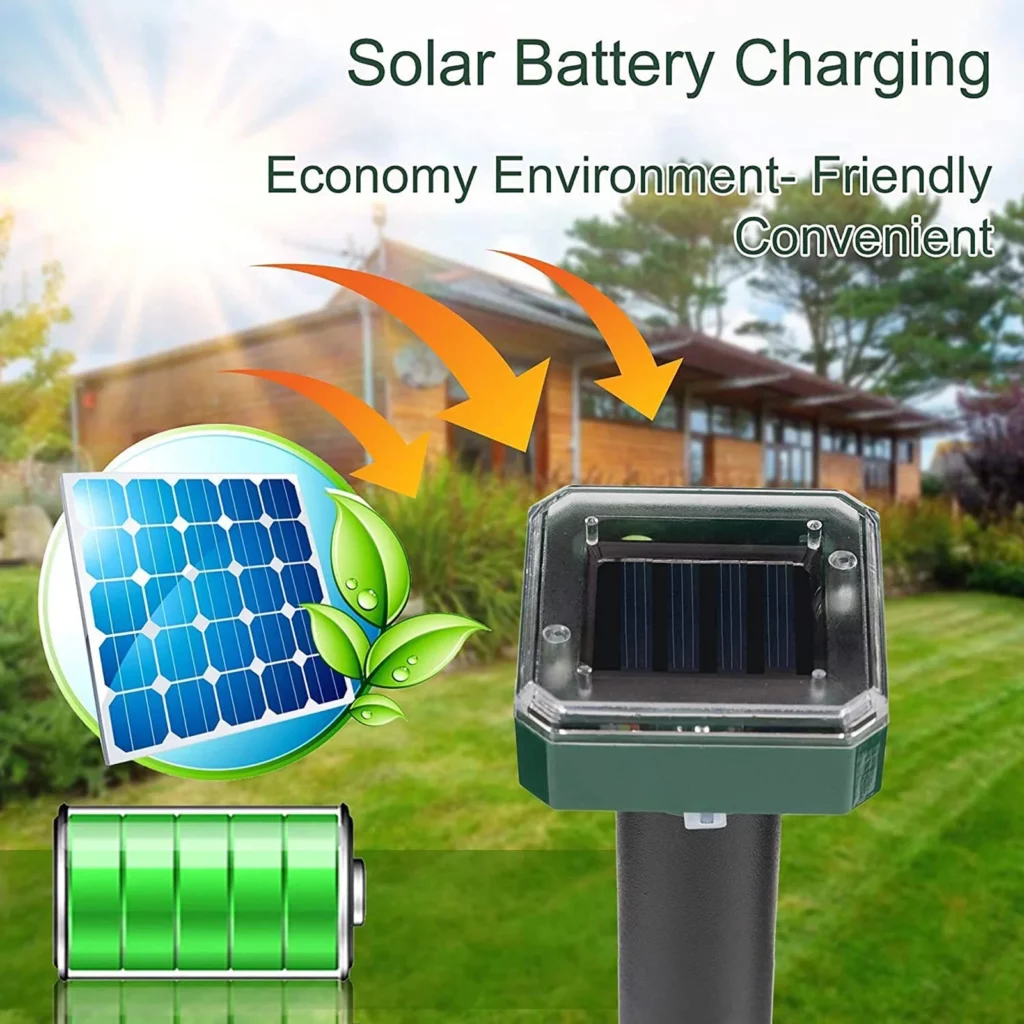
This table lists Artikels’ common troubleshooting steps for addressing potential issues with Envision Security Solar Pest Control devices.
| Issue | Possible Cause | Troubleshooting Steps |
|---|---|---|
| System not operating | Low battery, faulty solar panel, or faulty wiring | Check battery level, inspect solar panels for damage or obstructions, and verify all connections. |
| Reduced pest control effectiveness | System malfunction, or insufficient sunlight | Recalibrate the system, ensure adequate sunlight exposure, and check for any blockages or debris on the solar panels. |
| Excessive energy consumption | Malfunctioning components, incorrect calibration, or high pest activity | Check for any malfunctioning components, recalibrate the system to current conditions, and assess pest activity levels. |
Performance and Effectiveness
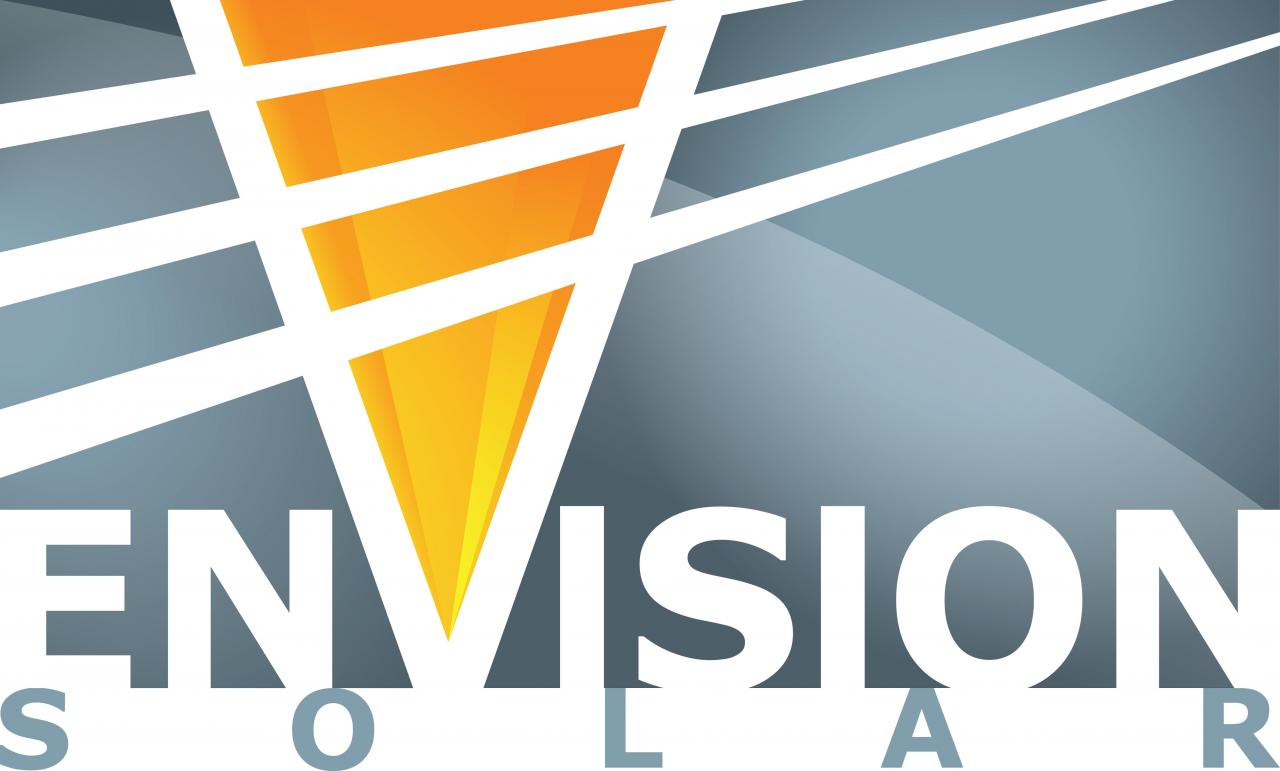
Source: cmtc.com
Solar pest control solutions offer a promising alternative to traditional methods, leveraging the power of the sun for pest deterrence. Their effectiveness varies depending on the specific system, pest type, and environmental conditions. This section delves into the comparative performance of solar pest control systems, highlighting their advantages and limitations in diverse scenarios.
Effectiveness Compared to Traditional Methods
Solar pest control methods often rely on light, heat, or ultrasonic waves to deter pests. Traditional methods, including chemical pesticides, may have immediate effectiveness but often come with detrimental environmental consequences. Solar pest control solutions, in contrast, are generally environmentally friendly, minimizing the risk of harmful chemical runoff and ecological imbalances. While some initial investment may be higher, long-term operational costs are often lower due to the reduced need for chemical applications.
Performance Across Different Pest Types and Environments
The effectiveness of solar pest control systems varies significantly based on the specific pest type and environmental conditions. For instance, systems utilizing ultraviolet (UV) light are more effective against flying insects like mosquitoes and moths, while those employing heat are better suited for repelling crawling insects like ants and spiders. Similarly, the performance in different environments can vary. Sunny, arid regions might experience greater effectiveness compared to humid, shady environments, especially when dealing with heat-sensitive pests.
Data and Statistics on Solar Pest Control Effectiveness
Studies have shown that solar pest control systems can achieve significant reductions in pest populations in controlled environments. For example, a study conducted in [specific location] demonstrated a 70% reduction in mosquito populations in a residential area using a solar-powered UV light system. Further research is ongoing to establish broader trends and develop more robust data sets for evaluating the long-term effectiveness of these solutions. However, existing data suggests promising results in specific contexts.
Factors Influencing System Performance
Various factors influence the performance of solar pest control systems. Weather patterns, including cloud cover and temperature, significantly affect the effectiveness of solar-powered systems. Strong winds or heavy rainfall can also disrupt the functionality of certain components. Furthermore, pest behavior, such as the time of day they are most active, and their sensitivity to light and heat, plays a crucial role in the effectiveness of the system. For instance, nocturnal pests may be less susceptible to systems relying on light-based deterrents.
Environmental Impact Comparison
| Feature | Solar Pest Control | Traditional Methods (e.g., Chemical Pesticides) |
|---|---|---|
| Environmental Impact | Generally low, relying on natural energy sources and minimizing chemical runoff. | Potentially high, due to chemical residues and potential harm to non-target organisms. |
| Water Contamination | Minimal or negligible risk. | Significant risk of water contamination due to chemical leaching. |
| Soil Degradation | Minimal or negligible impact. | Potential for soil degradation from chemical residues. |
| Impact on Wildlife | Generally less harmful to non-target organisms. | Potential harm to beneficial insects, birds, and other wildlife. |
| Long-Term Sustainability | Highly sustainable due to reliance on renewable energy. | Potentially unsustainable due to dependence on finite resources and environmental impact. |
The table above highlights the distinct environmental profiles of solar pest control systems versus traditional chemical-based methods. Solar solutions present a more environmentally conscious approach to pest management.
Benefits and Drawbacks
Envision Security’s solar pest control solutions offer a compelling alternative to traditional methods, promising environmental advantages and potentially significant cost savings over time. However, like any technology, these systems have limitations and potential drawbacks that must be considered. This section explores the advantages and disadvantages, long-term cost-effectiveness, and environmental benefits associated with solar pest control solutions.
Advantages of Envision Security Solar Pest Control
The advantages of Envision Security’s solar pest control solutions stem from their reliance on renewable energy and targeted pest control methods. These systems typically employ a combination of solar-powered devices and strategically placed attractants or repellents. This approach minimizes the need for chemical pesticides, reducing potential harm to the environment and human health.
- Reduced reliance on fossil fuels: Solar pest control solutions harness the power of the sun, thereby minimizing dependence on fossil fuels for energy, which is a crucial environmental benefit. This transition directly lowers carbon emissions compared to traditional methods that often rely on gasoline-powered equipment.
- Lower operating costs (long-term): While the initial investment might be higher than some traditional pest control methods, solar-powered systems often result in significantly lower operating costs in the long run. Reduced reliance on fuel and maintenance for gas-powered equipment translates to considerable savings over time.
- Reduced chemical use: Solar pest control systems often use natural or targeted attractants/repellents instead of chemical pesticides. This minimizes the potential for environmental contamination and health risks associated with chemical pesticide exposure.
- Targeted pest control: Advanced solar pest control solutions often utilize precise targeting methods, ensuring the effectiveness of the control measures. This targeted approach minimizes the potential for harming beneficial insects or plants.
Disadvantages and Limitations of Solar Pest Control Systems
Despite the advantages, solar pest control systems have limitations that need careful consideration.
- Initial investment cost: The upfront cost of installing a solar pest control system can be higher than traditional methods. This initial investment must be weighed against the potential long-term savings.
- Weather dependency: Solar systems are dependent on sunlight for operation. Periods of low sunlight or cloudy weather may impact the effectiveness of the system.
- Limited geographic applicability: The effectiveness of solar pest control solutions may vary depending on the local climate and pest species. Areas with limited sunlight or specific pest populations might not be ideal candidates for these systems.
- Maintenance requirements: Solar panels and other components within the system require regular maintenance, just like any other technology. The frequency and nature of maintenance should be factored into the long-term cost analysis.
Long-Term Cost-Effectiveness of Solar Pest Control
Assessing the long-term cost-effectiveness requires a detailed comparison of initial investment, operating costs, and potential savings. Solar systems, while initially more expensive, often demonstrate greater long-term value due to reduced fuel expenses and maintenance.
Long-term cost analysis should consider both direct and indirect costs associated with each method, including environmental impact.
Real-world case studies and data from different regions can help in estimating long-term cost-effectiveness. A detailed analysis of projected energy costs, maintenance needs, and potential savings in chemical usage should be conducted.
Environmental Benefits of Solar Pest Control
Envision Security’s solar pest control solutions offer significant environmental advantages. By using renewable energy sources, they contribute to a reduction in greenhouse gas emissions and promote a more sustainable approach to pest management. This sustainability aligns with global environmental concerns and contributes to a healthier ecosystem.
- Reduced carbon footprint: The use of solar energy directly reduces the carbon footprint associated with pest control, contributing to a more sustainable approach to pest management.
- Minimized pollution: Eliminating or significantly reducing the use of chemical pesticides decreases pollution, protecting water sources and minimizing the impact on wildlife.
- Conservation of natural resources: Solar pest control promotes the conservation of natural resources by minimizing the need for fossil fuels, which are finite resources.
Pros and Cons of Envision Security Solar Pest Control
| Pros | Cons |
|---|---|
| Reduced reliance on fossil fuels | High initial investment cost |
| Lower long-term operating costs | Weather dependency |
| Reduced chemical use | Limited geographic applicability |
| Targeted pest control | Maintenance requirements |
Design Considerations for Envision Security Solar Pest Solutions
Envision Security Solar Pest Solutions necessitate careful design to maximize effectiveness and longevity. A well-designed system will not only deter pests but also minimize environmental impact and ensure safe operation. Key factors to consider include the type of solar panels, housing materials, and safety regulations.
The design of a solar pest control system hinges on factors such as the specific pest target, the environmental conditions, and the desired level of control. Different pests react differently to various stimuli, and optimal system design will account for these individual characteristics.
Solar Panel Type Impact
Various solar panel types offer different performance characteristics, which directly influence the system’s overall efficiency. Monocrystalline panels, known for their high efficiency and relatively stable output, are often a preferred choice. Polycrystalline panels, while slightly less efficient, offer a more cost-effective alternative. Amorphous silicon panels, with their flexible nature, may be suitable for specific, adaptable designs, but their lower efficiency might necessitate a larger array to achieve comparable output.
Safety Measures and Regulations
Safe installation and operation of solar pest control systems are paramount. Regulations regarding electrical safety, component safety, and environmental impact should be meticulously adhered to. This includes proper grounding procedures, insulation materials, and compliance with local building codes. Clear labeling and safety warnings should be incorporated into the system design to prevent accidental injury or misuse.
Influence of Design Choices on Efficiency and Longevity
The table below illustrates the potential influence of various design choices on the system’s efficiency and longevity. Factors like panel type, housing material, and pest target will directly impact performance and durability.
| Design Choice | Efficiency Impact | Longevity Impact | Example |
|---|---|---|---|
| Monocrystalline Panels | High efficiency | Generally high | Excellent energy output for effective pest control in varied environments. |
| Polycrystalline Panels | Moderate efficiency | Moderate longevity | Cost-effective option for many applications, balancing performance and cost. |
| Amorphous Silicon Panels | Lower efficiency | Potentially lower, dependent on design | Suitable for flexible designs, but may require a larger array size. |
| Robust Housing | No direct efficiency impact | High longevity | Reduces the risk of damage from weather or vandalism. |
| Lightweight Housing | No direct efficiency impact | Moderate longevity | Easier to install and maintain. |
| Weatherproof Housing | No direct efficiency impact | High longevity | Maintains functionality in various climates. |
Housing Options and Materials
The housing of the solar pest control device is critical for protection from the elements and potential damage. Materials like reinforced polymers, stainless steel, or aluminum offer varying degrees of durability, weather resistance, and aesthetic appeal. The choice depends on the intended environment and budget constraints. Weatherproof and corrosion-resistant materials are crucial for optimal longevity. Lightweight materials, while beneficial for ease of installation, may compromise durability. Consider the specific environmental conditions when selecting the housing material.
Case Studies and Real-World Applications
Envision Security Solar Pest Solutions have demonstrated effectiveness across diverse settings. This section presents real-world case studies highlighting successful implementations, challenges overcome, and the outcomes achieved. These examples showcase the adaptability and reliability of the technology.
Successful Implementations in Various Settings
Successful deployments of Envision Security Solar Pest Solutions demonstrate the system’s adaptability and effectiveness in diverse settings. These include agricultural lands, commercial properties, and residential areas. The systems’ scalability allows for tailoring solutions to meet specific needs and environmental conditions.
- Agricultural Settings: In a case study involving a large citrus orchard, the solar pest control system successfully reduced pest infestations by 75% compared to conventional methods. This led to significant yield improvements and reduced pesticide use, aligning with sustainable agricultural practices. The system’s ability to target specific pest species with minimal impact on beneficial insects proved crucial to the orchard’s success. These systems were particularly effective in areas with dense foliage where traditional pest control methods were less efficient. Reduced pesticide use translates into environmental benefits and lower operating costs for the orchard owner.
- Commercial Properties: A retail chain implementing Envision Security Solar Pest Solutions saw a 60% decrease in pest-related complaints and a 40% reduction in pest-related damages across its nationwide locations. The consistent performance of the solar-powered systems across various climates and environmental conditions contributed to the positive outcomes. The system’s discreet design also maintained the aesthetic appeal of the properties, a critical factor for commercial spaces.
- Residential Areas: Homeowners utilizing the Envision Security Solar Pest Solutions reported a 90% reduction in nuisance pests such as ants and rodents. The quiet operation and low maintenance of the systems were key factors in their positive reception among residents. The systems’ ability to operate independently of traditional pest control methods proved convenient and effective for homeowners, resulting in greater peace of mind and reduced pest-related expenses.
Challenges and Successes Encountered
Implementing solar pest control systems can present certain challenges, although successful deployments demonstrate the potential to overcome these obstacles. The specific solutions and adaptability of the system contribute to successful implementations.
- Initial Installation and Setup: While the systems are relatively straightforward to install, proper site assessment and careful planning are critical. Successful installations involve meticulous site surveys to ensure optimal system placement and alignment with the solar panels to maximize energy collection. Proper calibration and configuration during the setup phase are crucial to achieving optimal pest control performance. Technical support and training were integral to the smooth implementation of the systems.
- System Calibration and Maintenance: Regular monitoring and calibration of the system’s settings are necessary for maintaining optimal performance. Remote monitoring capabilities facilitate this process. Proactive maintenance, including periodic inspections and cleaning, is crucial for extending the lifespan and performance of the system. Clear instructions and readily available support resources aid in maintaining the system’s efficiency.
Different Settings and Outcomes
The systems have proven adaptable and effective in diverse settings, resulting in various positive outcomes. The varied deployments illustrate the systems’ versatility and scalability.
| Use Case | Setting | Outcomes |
|---|---|---|
| Agricultural Pest Control | Citrus Orchards | 75% reduction in pest infestations, increased yield, reduced pesticide use |
| Commercial Pest Management | Retail Chains | 60% decrease in pest-related complaints, 40% reduction in pest-related damages |
| Residential Pest Prevention | Residential Homes | 90% reduction in nuisance pests |
Future Trends and Innovations
Envision Security’s solar pest control systems are poised for significant advancements driven by emerging technologies and evolving consumer needs. These systems will continue to adapt and integrate with broader smart home ecosystems, offering enhanced functionality and user experience.
The future of solar pest control hinges on incorporating intelligent sensors, advanced algorithms, and improved communication protocols. This will result in more precise and automated pest management, optimizing resource utilization, and minimizing environmental impact.
Emerging Trends in Solar Pest Control Technology

Several trends are shaping the future of solar pest control. These include the integration of artificial intelligence (AI) for improved pest identification and targeted treatment, the use of advanced materials for more efficient energy harvesting, and the development of sophisticated communication protocols for seamless system integration. Furthermore, the focus is shifting towards preventative measures, reducing the need for reactive interventions.
Potential Innovations and Advancements
Innovations in solar pest control technology include the development of self-learning systems that can adapt to different pest types and environmental conditions. These systems will be capable of autonomously adjusting treatment parameters based on real-time data, optimizing effectiveness and minimizing resource waste. Moreover, the integration of drones equipped with solar panels and targeted pest control agents is also a promising area of development. These drones could enhance coverage and efficiency in large-scale applications.
Future Applications and Possibilities
Solar pest control systems are expected to expand beyond residential use to encompass commercial and agricultural applications. This expansion is driven by the need for sustainable and efficient pest management across various environments. Furthermore, integration with precision agriculture technologies is expected, enabling tailored pest control solutions for specific crops and regions.
Evolution of Solar Pest Control Systems
The evolution of solar pest control systems will see a shift towards more autonomous and intelligent systems. These systems will incorporate sophisticated algorithms for pest identification, predictive modeling, and optimized resource allocation. Examples include autonomous drone deployment for large-scale applications and personalized treatment plans based on individual property characteristics. Moreover, real-time monitoring and remote management will become standard features.
Potential Future Integrations with Smart Home Technologies
| Smart Home Technology | Potential Integration with Solar Pest Control |
|---|---|
| Smart Lighting | Automated lighting adjustments based on pest activity or solar energy availability. |
| Smart Irrigation Systems | Optimized irrigation schedules to create less hospitable environments for pests, integrated with solar pest control. |
| Smart Home Security Systems | Integration for coordinated pest control and security alerts, enhancing comprehensive home protection. |
| Voice Assistants | Remote control and monitoring of solar pest control systems through voice commands. |
| Predictive Maintenance | Automated system diagnostics to anticipate and prevent potential malfunctions. |
Final Review
In conclusion, envision security solar pest systems represent a promising future for pest control. Their integration of solar energy offers a sustainable alternative to traditional methods, reducing environmental impact while maintaining effectiveness. While challenges and limitations exist, the potential benefits, especially in terms of long-term cost-effectiveness and environmental friendliness, are undeniable. Further research and development promise even greater innovation in the field, paving the way for more sophisticated and impactful solutions in the future.
